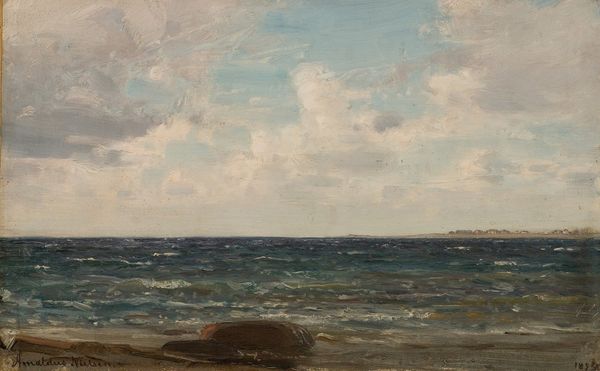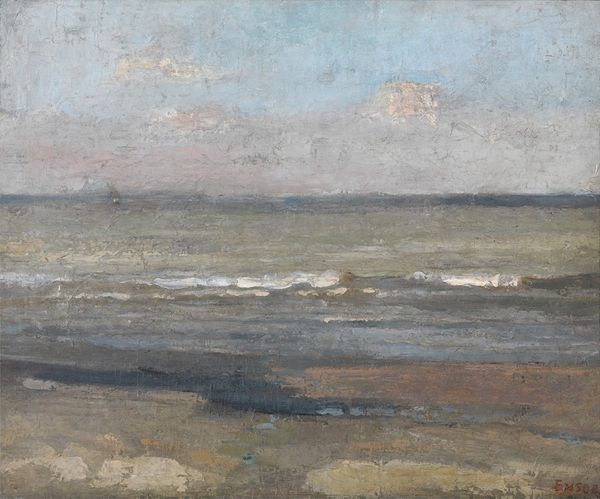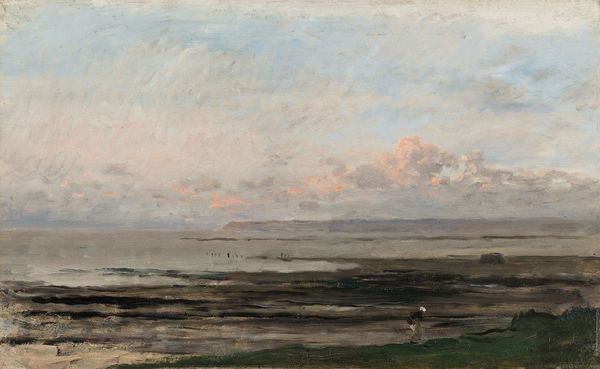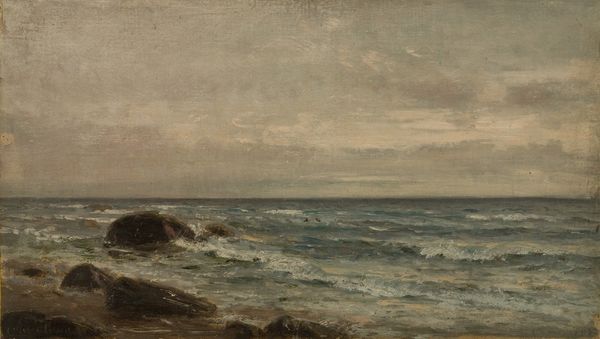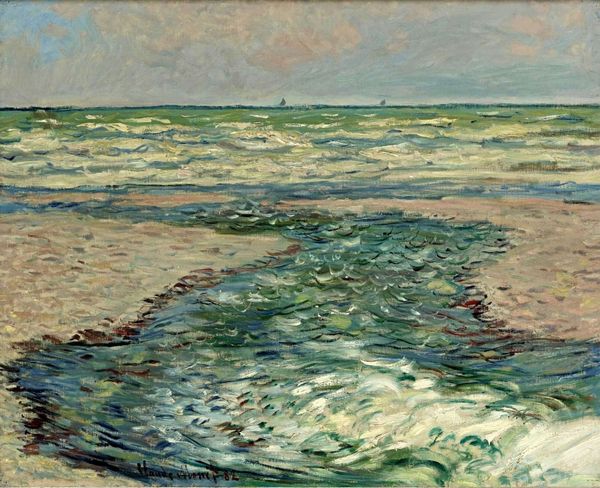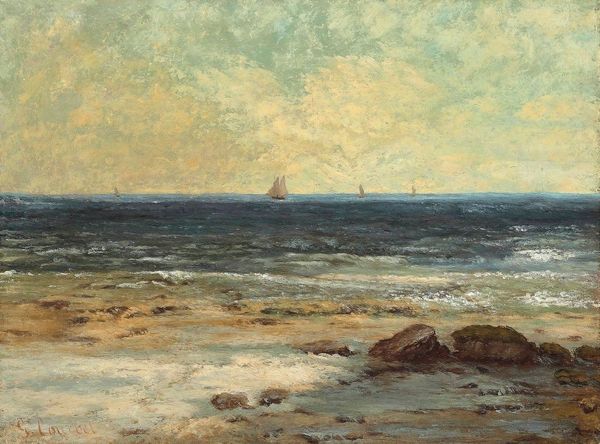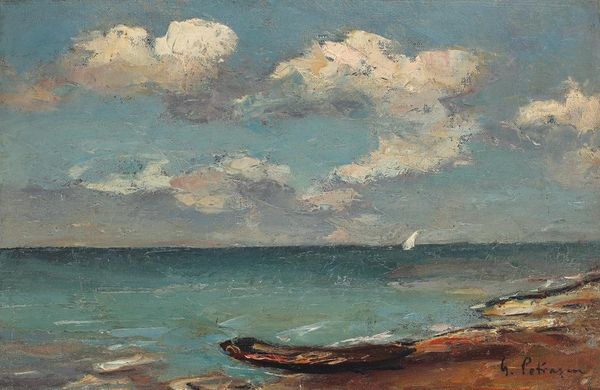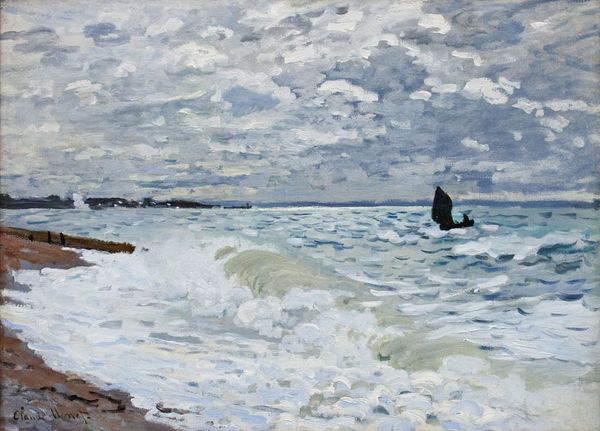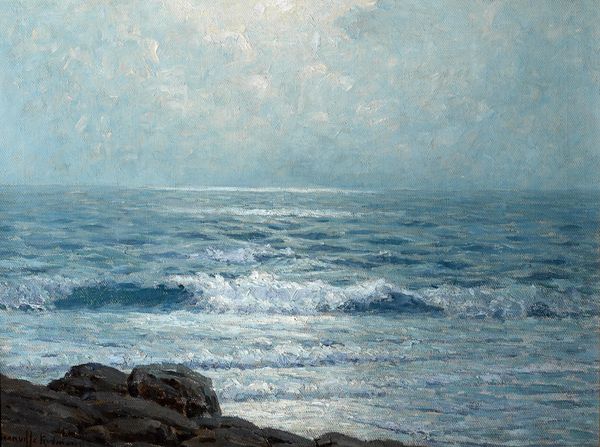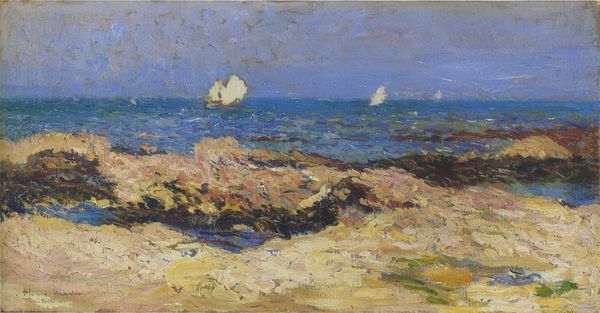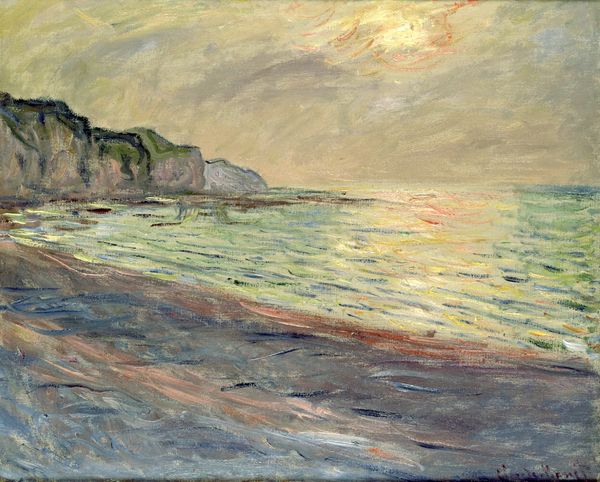
painting, plein-air, oil-paint, canvas, impasto
#
painting
#
impressionism
#
plein-air
#
oil-paint
#
landscape
#
impressionist landscape
#
oil painting
#
canvas
#
impasto
Dimensions: 47 cm (height) x 61.5 cm (width) (Netto)
Curator: Oscar Björck's "Sunlight over the Sea," painted in 1882, offers us a glimpse into the artistic sensibilities of late 19th-century Scandinavian Impressionism, here at the Statens Museum for Kunst. Editor: My first impression is of melancholy. The grey-blue palette, the desolate post in the water… it speaks of loneliness, of being on the periphery. Curator: It's interesting you interpret the single post as a symbol of desolation. I see it as an echo, perhaps, of human resilience within the face of vast, uncaring nature. These maritime markers carry meaning through generations. Editor: But the human presence seems so insignificant, overwhelmed by the sheer immensity of the sea and sky. The choppy brushstrokes create a restless surface, an anxious energy. Think about the lives dependent on this sea. Fishing communities struggling against unpredictable elements, maybe? Curator: You raise an important point about the socio-economic realities behind coastal communities. While this particular work may lack overt social commentary, that reading is very possible. Björck primarily engaged with a tradition of painting light and atmosphere outdoors, what the French termed 'en plein air'. Notice the thick impasto of the oil paint. The rough application is itself an embrace of immediacy. Editor: True, the Impressionist aesthetic often prioritized sensory experience, but that doesn't negate potential for broader interpretation. Consider the vantage point itself: we’re at the shoreline, literally on the boundary. Visually, Björck creates this in-between state. The subtle tones, while beautiful, also communicate the liminal, a sense of being on the verge. Who has historically been confined to those spaces, and why? Curator: Perhaps "Sunlight over the Sea" then embodies both the visual experimentation of its time and the lingering, ever-pertinent questions of human existence within, or at the mercy of, the natural world. Editor: Exactly. It serves as a gentle reminder to look beyond the aesthetic and ask: whose story is being told, and whose is absent? Björck’s piece sparks dialogues, it does not settle for aesthetic appreciation, no matter how pleasant it might be to start there.
Comments
No comments
Be the first to comment and join the conversation on the ultimate creative platform.
